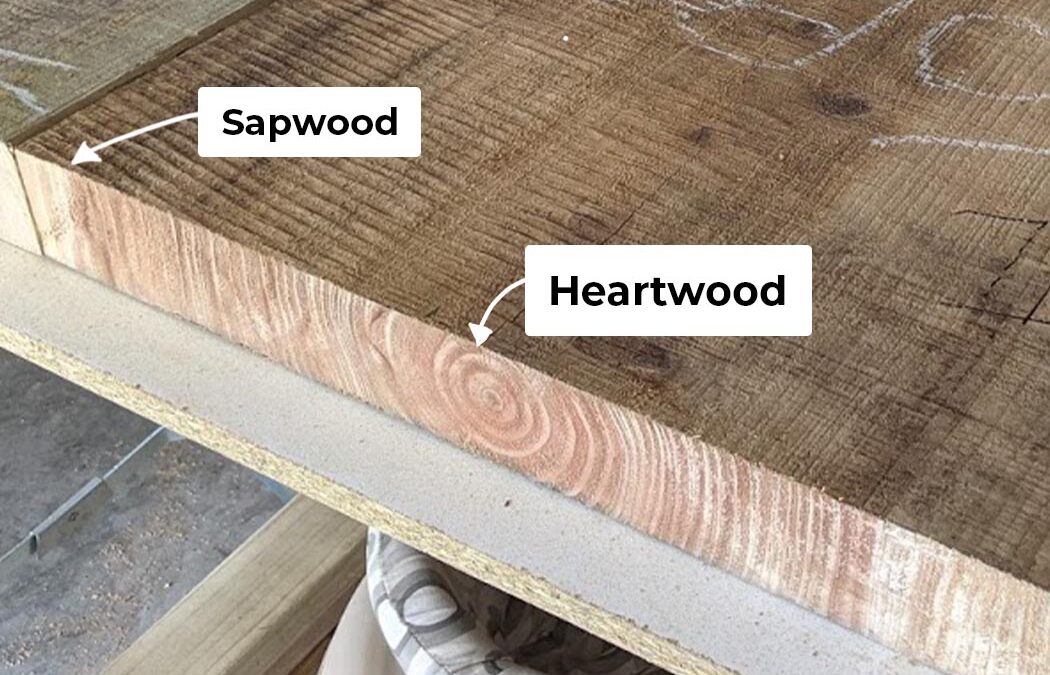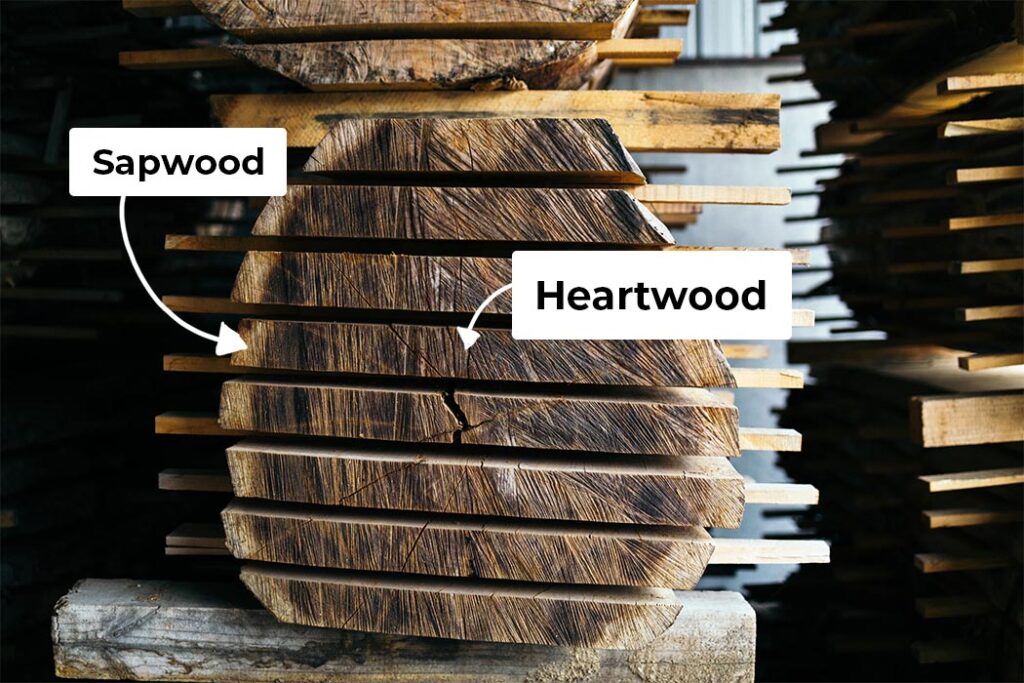Different kinds of timber exhibit different characteristics when you cut them in half and examine the cross section. These unique characteristics will influence the final outcome of a piece as the stain of the timber can change over time, becoming darker or lighter when exposed to UV light. Knowing the parts your timber slab is made up of, will help inform the final design of the furniture. Heartwood and Sapwood are two parts of a timber that exhibit these unique characteristics and are the most prominent in live edge furniture.
What is Sapwood?
Sapwood is the out light-coloured part of the tree trunk where water passes from the roots to the leaves, and where excess food is stored. Sapwood is the wood you see as the “live edge” to our slab furniture products.
As a tree grows, new sapwood is formed under the bark, and the inner sapwood changes to heartwood where the living cells die, and the pores become plugged from “tyloses”. over time, you may notice various knots in the wood where branches existed. These knots need to be carved out if too soft, and filled with epoxy to guarantee hard finishes depending on the application the timber is being used for.
Photo by Sarah Worth
What is Heartwood?
Heartwood is the central core to the tree trunk. With most woods, heartwood is usually the darker portion of the wood. As a rule, heartwood is more durable than sapwood as its less subject to attack by insects and mould-producing fungi (hence why it is important to cure and dry a timber slab in high heat conditions over prolonged periods of time).
Fun fact: Heartwood is less pervious to liquid, and is suitable for tight cooperage, tanks and conduits.


